October 2021 Update – Appeal dismissed
Residents and supporters of Whitehall Lodge were delighted to hear that the government’s planning inspector rejected both appeals. In reaching their decision, the inspector reconfirmed Whitehall Lodge’s, “overall quality of design, its historic value as an authentic and well-preserved example of its architectural style, and the contribution it makes to the quality and variety of the MHCA (Muswell Hill Conservation Area).”
We wish to sincerely thank everyone who helped support our campaign. This is a wonderful result for the community, for the conservation of twentieth century architecture, and confirmation of Whitehall Lodge’s unique contribution to the built heritage of Britain.
May 2021 Update – Planning Appeal – urgent call to action!
Following Haringey Council’s rejection of two different planning applications to add a large rooftop extension to Whitehall Lodge, the freeholder/developers submitted an appeal to the government’s planning inspectorate. Representations from the public can now be made to the planning inspector (deadline 09/06/2021), and your help is urgently needed to prevent the council’s decision from being overturned. Details of how to make comments are provided at the bottom of this page. Thank you.
Whitehall Lodge is a historically important apartment building located on Pages Lane, Muswell Hill in north London. It was constructed in 1936-37 by the English and Scottish Co-Operative (E&S)(1) and represents a rare example of efforts to market Modernist design to suburban residents.
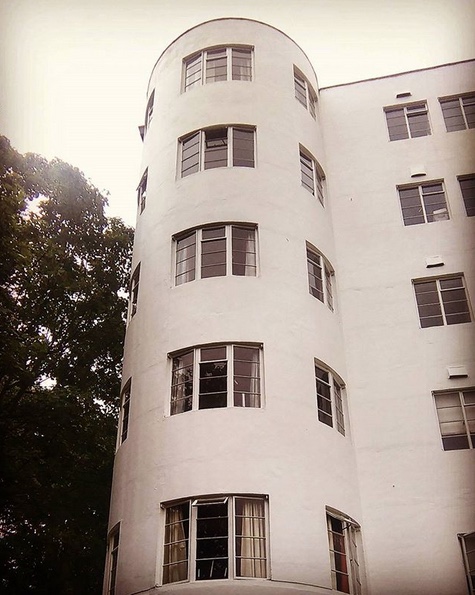
The flats were designed in the ‘Streamline Moderne’ style, an architectural style of the mid-1930s, which, as an evolution of the Modernist and Art Deco styles, placed great emphasis on the clean lines and sweeping sculptural forms which could now be achieved, especially through the use of monolithic reinforced concrete as seen here at Whitehall Lodge. Streamline buildings were deliberately made free of surface detail and decorative elements in order to emphasize the rhythm and proportion of the whole; the wave-like façade of Whitehall Lodge, with its multiple planes and curves held between a striking pair of cylindrical towers, is a fine example of this style. Reinforced concrete was still a new method of building in the 1930s, making Whitehall Lodge an exceptional example of its use in a suburban setting and one of only a very small number of such buildings in the whole of Britain. Even the famous academic and critic Nikolaus Pevsner took pause during his survey of Muswell Hill to note its ‘white and austere’ presence on Pages Lane.
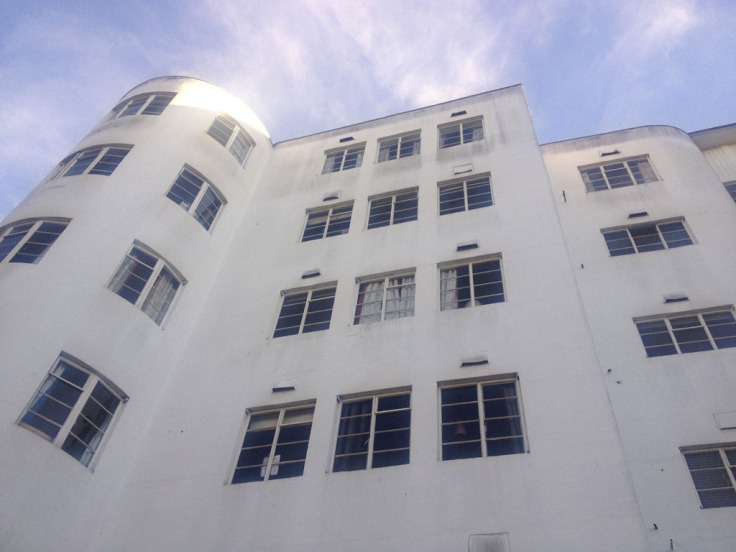
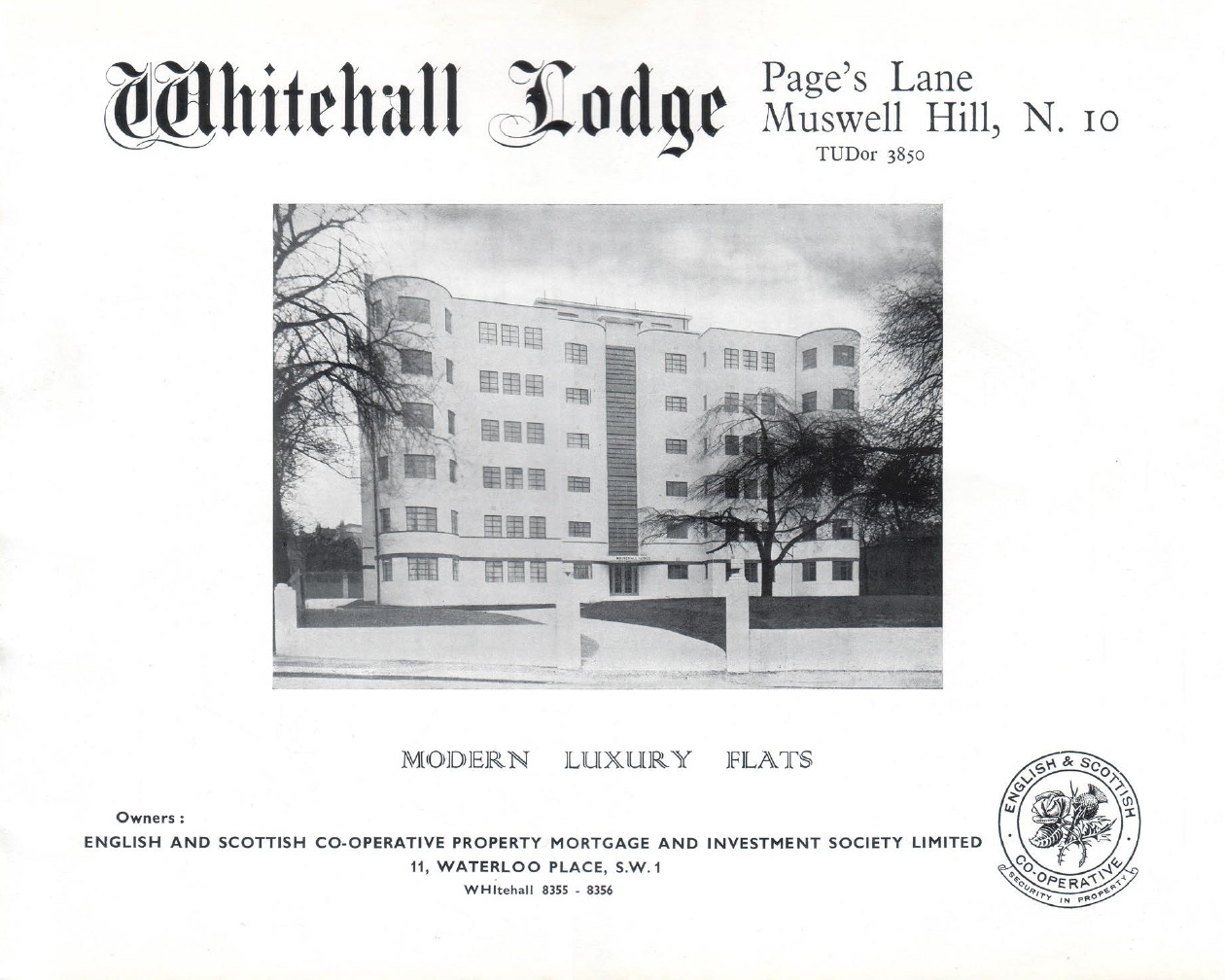
The architect responsible for the original design for Whitehall Lodge was Henry W. Binns of Binns & Scarlett(1). Both Binns and his partner Frank Scarlett had significant experience in the Modernist and Art Deco styles, and had completed many notable projects prior to being commissioned to design Whitehall Lodge in 1935. Binns’ earlier work include the Art Deco Gas Showrooms in Wandsworth and the Chalfont House apartments in Belgravia. Binn’s partner Scarlett had produced one of the earliest Modernist houses in the Britain, Starlock in Rye, which on completion in 1929-30 was only the third building in Britain to be built in the Modernist style. Binns’ T-shape plan for Whitehall Lodge was then enhanced by additions from English & Scottish’s arcitect Cyril Smith, who added the distinctive towers and balconies we see today, in a manner comparable to those at Ruskin Park House (Champion Hill, South London), then also under development with E&S to designs by Watkins Gray architects.
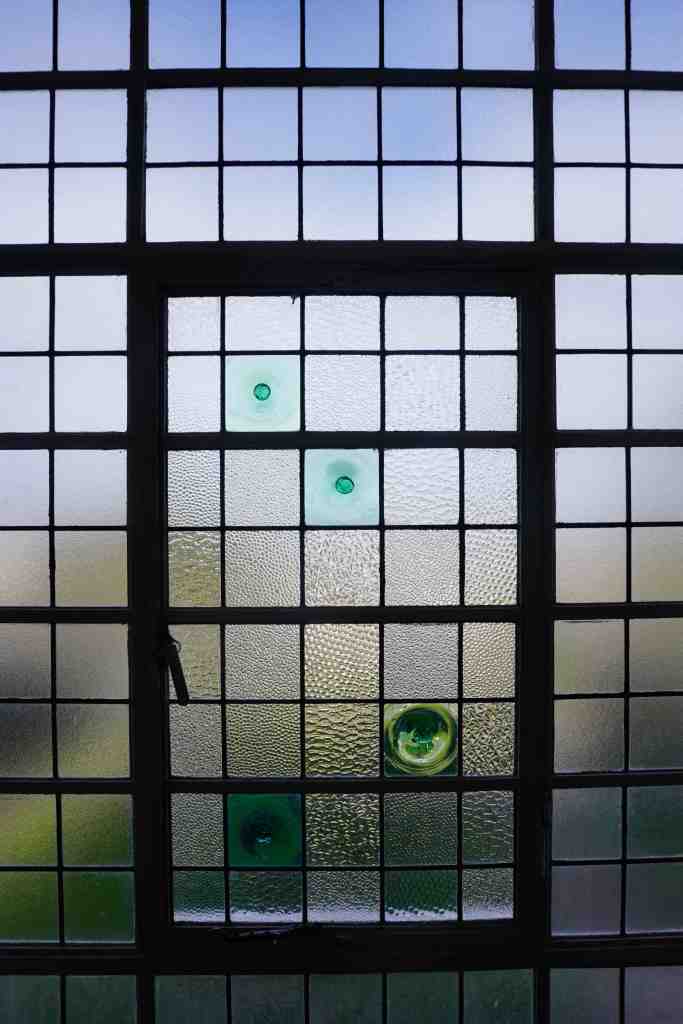
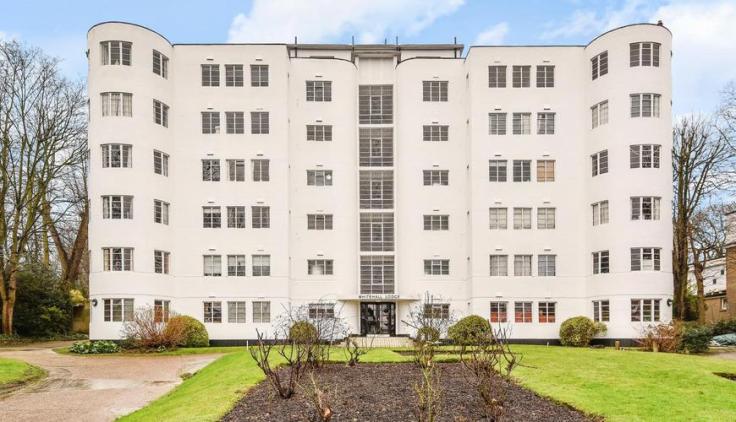
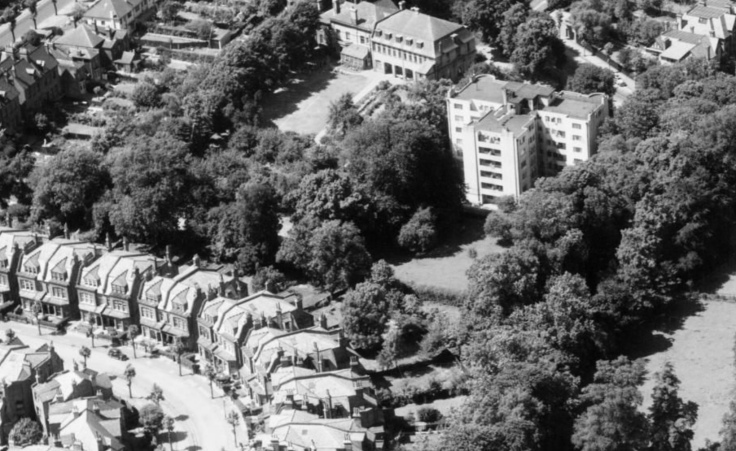 Whitehall Lodge from the air (1947) ©Britain from Above
Whitehall Lodge from the air (1947) ©Britain from Above
Early residents of Whitehall Lodge were provided with a uniformed porter service and various technologically-advanced facilities, including an all-electric laundry and drying room on the roof, central heating, and an Art Deco style lift, the latter still in service today. The period doors to each of the 36 flats retain their original decorative glass panels and are flanked by a set of discrete ‘trade hatches’, originally provided so that foodstuffs, household rubbish and coal could be delivered or collected without disturbing the occupants. The lobby is wood-panelled at ground floor level and a sweeping brass balustrade leads to the generously proportioned upper landings, which are lit by natural light from a distinctive leaded-glass window bar. This vertical glazing runs the entire height of the building and features thousands of varying textured and coloured glass pieces. Internally, the apartments boasted early examples of fitted kitchens and bathrooms, the latter being half-tiled in yellow, green and black (a scheme closely resembling that at nearby Highgate station). Several examples of the original bathrooms remain in situ. The original sales brochure indicates that the kitchens were supplied with Ismay Zeros electric refrigeration units(2). A private air raid shelter was added at the outbreak of WW2, during which period the flats were marketed as ARP safe due to their concrete structure(3). Notable former residents of the building include Rajani Palme Dutt, founder of the Communist Party of Great Britain and a leading political thinker and author of his day.
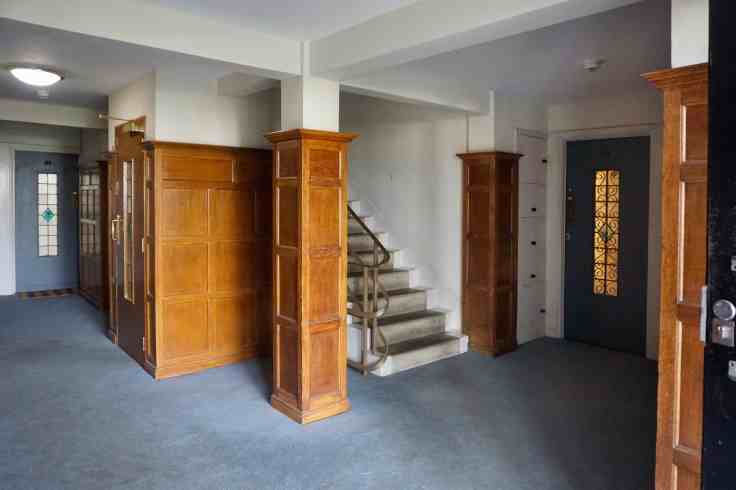
In 1976, just 40 years after work commenced on Whitehall Lodge, the building was listed by Haringey Council as a ‘building of merit’ in recognition of its architectural significance and valuable contribution to the character of the local Conservation Area. By 2020 its historical significance has naturally increased, as has the public’s appreciation of the merits of Modernist and Art Deco architecture and design. The building is in remarkably original condition and all of the flats retain their original Crittall-style metal window frames. The building is much-loved by its residents who have recently obtained the right to self-manage the building and who are dedicated to preserving it for future generations.
The entry for Whitehall Lodge in Haringey’s current Conservation Area Character Appraisal (Area 3 – Muswell Hill, 9.5) reads as follows:
Whitehall Lodge is an impressive ‘T’ shaped six storey block of flats built in the 1930s in an international ‘Modern’ style set well back from the street frontage in landscaped grounds. It is included in the Council’s local list of buildings of merit. The elevation is white painted render stepping forward in a symmetrical series of curved and flat planes from the central full height glazed entrance door and staircase tower surmounted by a small penthouse on the flat roof. The outer, most forward, projections are in the form of full height circular towers. All of the windows retain their original characteristic Crittall metal window frames with horizontal glazing bars.
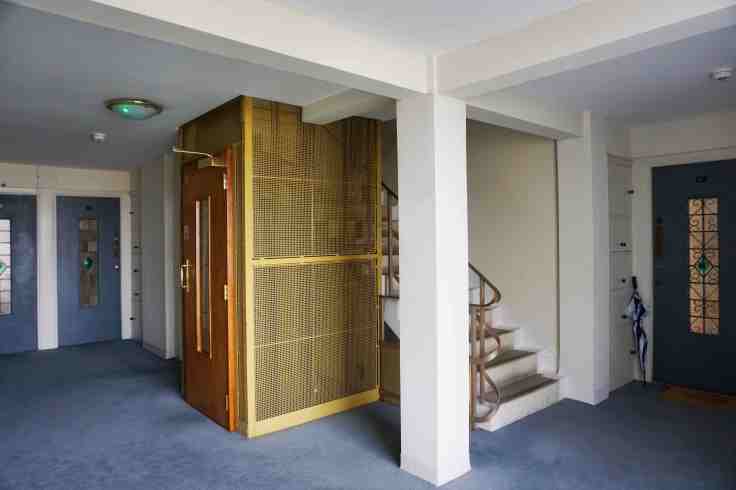
Whitehall Lodge also features strongly in a group of period buildings within the Conservation Area constructed in the Art Deco and Modernist styles. These include George Coles’ Grade II* listed former Odeon Cinema and a terrace of white-painted Streamline houses at nos. 70 to 78 (even) Tetherdown.
The Current Threat to Whitehall Lodge – May 2021
A planning application was submitted in 2019 by the freeholder Swanlane Estates Ltd. which threatened to add 6 new residential units onto the roof of Whitehall Lodge. This highly unsympathetic plan, which would have added a double-height extension of very poor quality, was universally condemned by leaseholders and representatives of the local Conservation Area. It was subsequently rejected by Haringey Council’s planning department in July 2020.
In October 2020, a revised plan was submitted to add 4 residential units to the rooftop which was again defeated following an energetic campaign by residents and was rejected by Haringey Council. Though somewhat reduced in scale, the revised plans still represented a highly-damaging threat to a locally-listed building which would have harmed a historic building and diminished the local Conservation Area. The revised plans received over 170 objections, including objections from members of the public drawn locally, nationally and internationally, and from architectural interest groups including the 20th Century Society (C20).
Following the rejection of both plans, the freeholder has lodged an appeal on both applications with the national planning inspectorate. We would therefore urge everyone who does not wish to see the building and the Conservation Area ruined by these damaging proposals to make written comments to the planning inspector by their deadline of 9th June 2021. Comments can be made by emailing north1@planninginspectorate.gov.uk quoting the reference numbers below, or online at https://acp.planninginspectorate.gov.uk. Please remember that there were two planning applications and therefore two appeals, and that comments need to be made on both. The reference numbers are APP/Y5420/W/21/3266860 and APP/Y5420/W/21/3266863. Word documents or PDFs can be attached, and this is especially useful if you would like to include images.
APP/Y5420/W/21/3266860
This appeal will review the original 6 unit development which was considered grossly overbearing and highly-unsympathetic to the historic design of the building and the Conservation Area. Inside, the destructive modifications to the upper landing to insert a new staircase would require demolition of original parts of the building in a manner which is not clearly resolved in the plans. A full set of the plans can be viewed at the Haringey planning portal, reference number HGY/2020/0665.
Architects drawings of the proposed 2 storey extension (front elevation and isometric). The striped areas show the new construction.
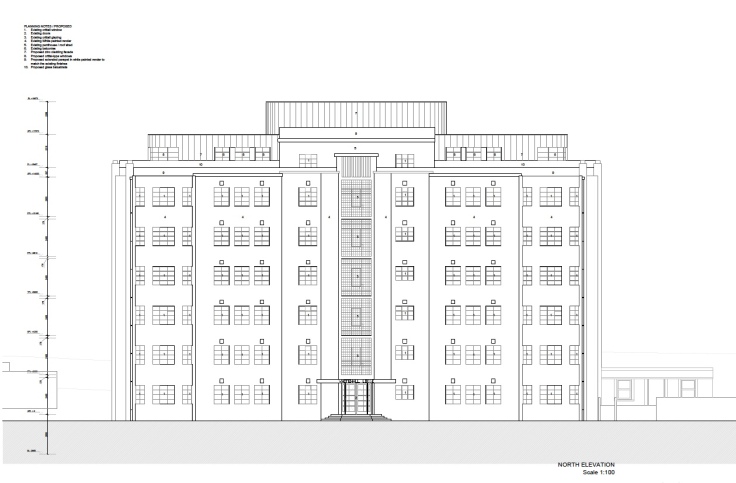
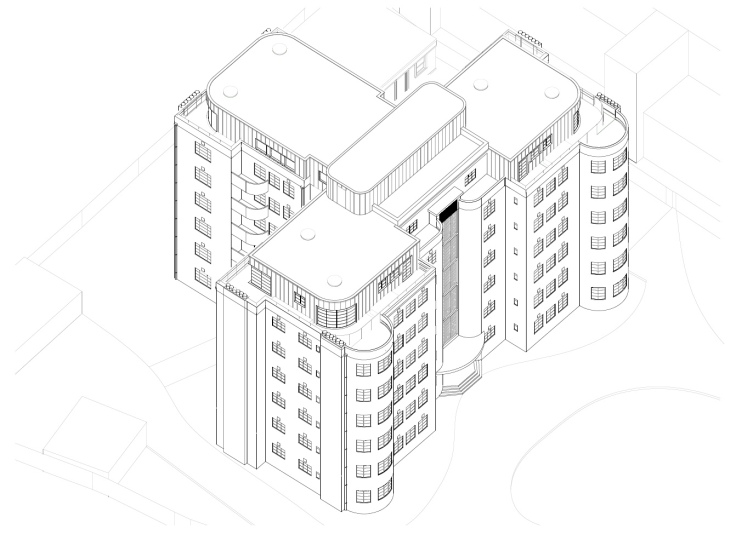
In rejecting this application, the local officer’s report stated that the plans would cause harm to the character and appearance to the conservation area and harm the amenities of existing and future occupiers. The report further stated that the design did, “not relate well to the design and appearance of the host building and overall would be an incongruous and visually detrimental addition failing to preserve the character and appearance of this part of the Conservation Area,” adding, “the proposed additional parking provision to the rear of the building, by reason of its location and amount would be harmful to the amenity of existing and future occupiers.”
APP/Y5420/W/21/3266863
This appeal will review the revised application (Haringey planning reference HGY/2020/2588) which proposed to add 4 new luxury flats on top of the building. A full set of plans can be viewed at the Haringey planning portal. The areas shaded in red in the renderings below show the proposed extension when viewed from Pages Lane. An extension of similar scale was proposed for the rear section of the roof which would be visible from the surrounding houses. In rejecting the revised application, the council’s report stated, “the proposed roof extension by reason of its siting and bulk would cause harm to the design and appearance of this original building, in specific to the integrity of its original roofline as appreciated from short and longer views. The limited benefit of four residential units is not sufficient to outweigh the harm caused to this heritage asset and its contribution to the character and appearance of this part of the conservation area.”
Although the revised plans were somewhat reduced in scale they would be no less damaging to the building. The proposed extension still threatens to spoil a historic locally-listed structure, permanently altering its distinctive silhouette by adding a poorly-designed box on top of it. The extension would also require the partial demolition/obscuring of parts of the original structure, including the former laundry rooms on the roof. Internally, the carefully considered and well-preserved upper landing area would be ruined by the clumsy and awkward addition of a new staircase which neither matches the style nor the layout of those below.
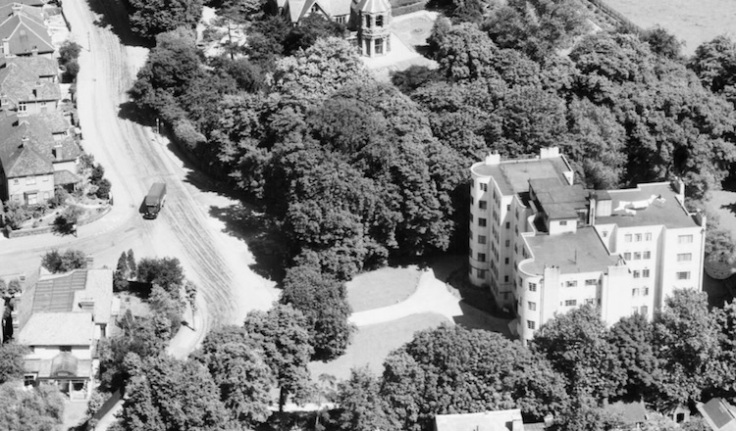 Whitehall Lodge from the air (1947) ©Britain from Above
Whitehall Lodge from the air (1947) ©Britain from Above
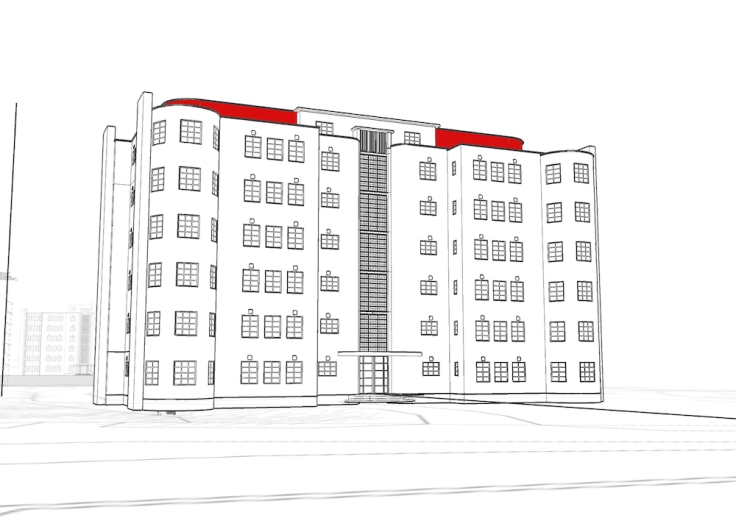
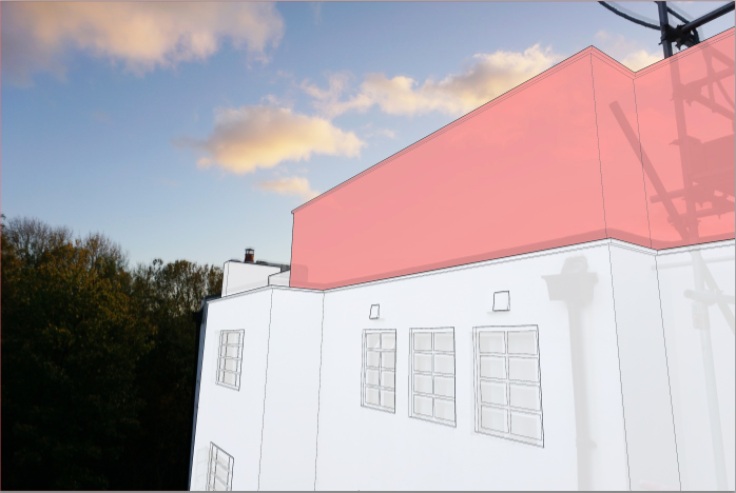
We believe this is an entirely damaging and flawed proposal and one which would have a permanent negative effect on an important heritage asset:
- Given the evident architectural merit and well-preserved nature of the original structure, which has remained unchanged since 1937, the proposed additions will cause irreversible damage to the integrity and aesthetic of the building, permanently disfiguring its outline and distorting the architectural readability of the whole.
- The building has significant historical interest within the borough. As a unique architectural example within Haringey, it makes a very positive contribution to the local Conservation Area and is rightly designated as a heritage asset. Whitehall Lodge should therefore continue to receive the protection from poor-quality interventions that it deserves.
- The proposed new flats will extend over the majority of the roof of the current building and will substantially increase the scale and bulk of the building when viewed from street-level.
- The proposed extension would require the partial demolition of the rooftop’s original laundry rooms and lift house, resulting in the loss of several original windows and doorways.
- New contemporary-style features, such as the frameless glass ballustrades surrounding the rooftop terraces, are alien to the character of the original building and would draw unwelcome attention to the new extension by reflecting light.
- The new roof-top terraces (the current building deliberately has no balconies to the front elevation facing Pages Lane) would add unwelcome visual clutter such as parasols, patio furniture and fairy lighting, much to the detriment of the building and the Conservation Area.
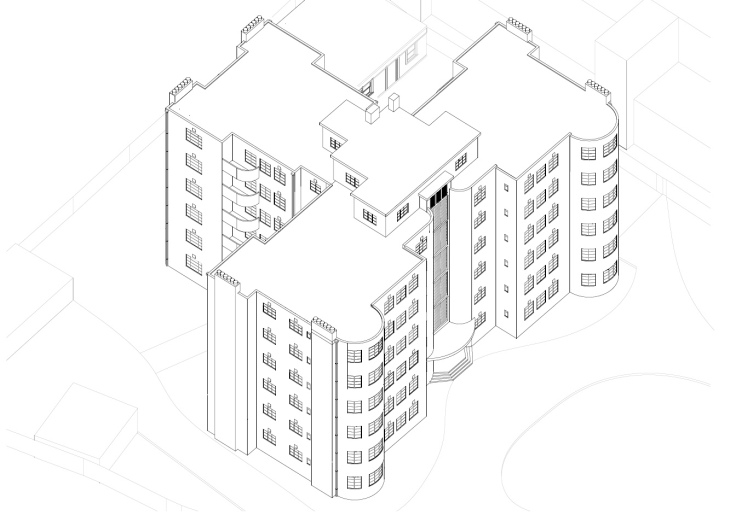
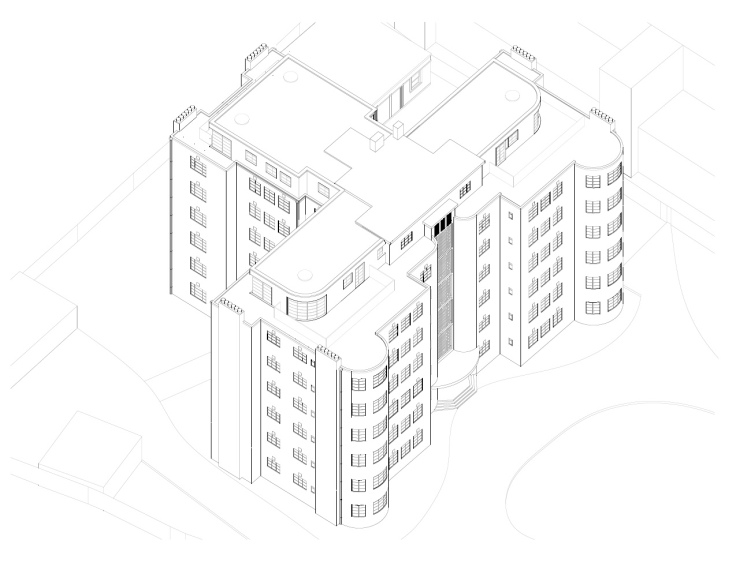
Architects’ isometric drawing revised plan5 ©Emergent Design Studios Ltd.
References
- Haringey Council Building Control, record no. 10,718.
- Original Sales Brochure, English & Scottish Cooperative, 1937.
- Advertisement, The Times, issue 48720, Friday, Sept. 13, 1940.
- Haringey Council Planning Application, ref number HGY/2020/0665.
- Haringey Council Planning Application, ref number HGY/2020/2588.
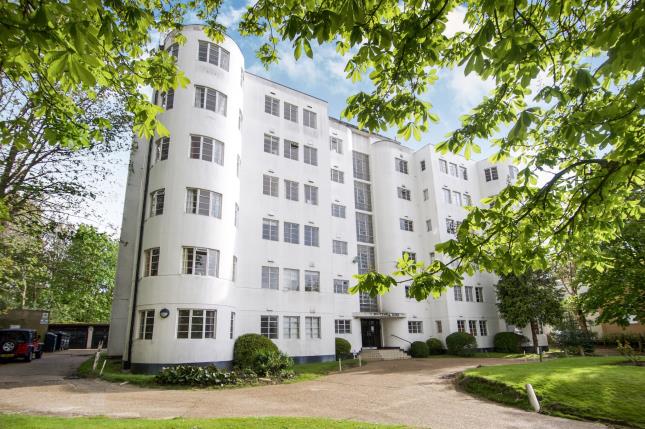



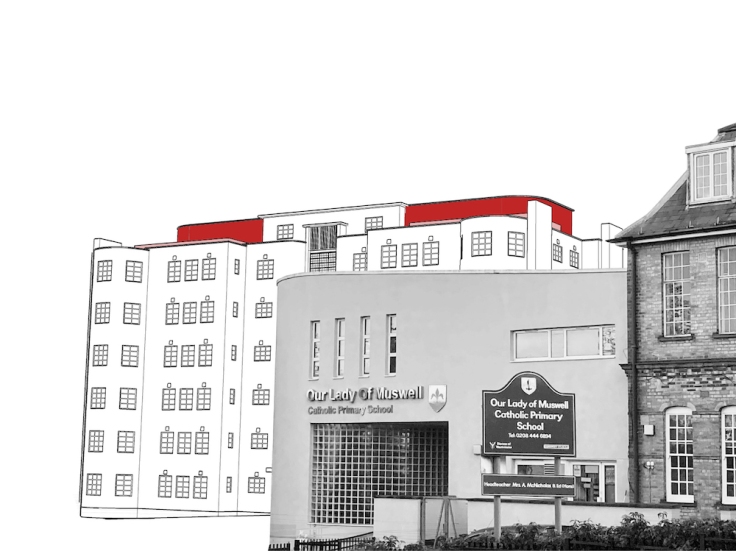
November 19, 2020 at 9:55 am
This is a fabulous building and it would be a travesty to alter, wreck it’s perfect proportions. Good design must surely be protected!
LikeLike
November 19, 2020 at 6:12 pm
Thanks Wendy – we’re doing our best to protect – keep your fingers crossed!
LikeLike
November 23, 2020 at 12:42 am
Perfect cannot be improved, nor should hubris and money override great design !
LikeLike
November 23, 2020 at 9:21 am
We couldn’t agree more Albert. Thanks for your support!
LikeLike
March 20, 2021 at 1:28 am
Heaven forbid those units be added to the roof! I just discovered the issue while sharing online pictures of it and my former elementary school with my two adult children. I lived there for several years when my father (U.S. Navy physician) was stationed in London – approximately 1953-1957. I was thrilled to see how beautifully the complex still is — until I read about that horrific proposal. I hope greed is not allowed to ruin it.
LikeLike
March 25, 2021 at 4:06 pm
How wonderful to hear of your time spent in Whitehall Lodge back in the 50s and thanks for the well wishes. Following the rejection of both planning applications by the local planning department the freeholder is now taking things to an appeal. As this appeal has been delayed somewhat due to the pandemic we’re in a dreadful limbo at the moment.
LikeLike
May 17, 2021 at 2:24 am
The building was built in the 1930s in reinforced concrete and I, as a Japanese, think it is very beautiful and valuable. Please don’t destroy it. Please don’t destroy it, please repair it and keep it in use. If you destroy it, it will be a disgrace to Britain.
LikeLike
May 17, 2021 at 8:52 am
Hi Shoji, thanks for your support! If you could also email your comment to north1@planninginspectorate.gov.uk and quote reference numbers APP/Y5420/W/21/3266860 and APP/Y5420/W/21/3266863 we would really appreciate it. THANK YOU!
LikeLike